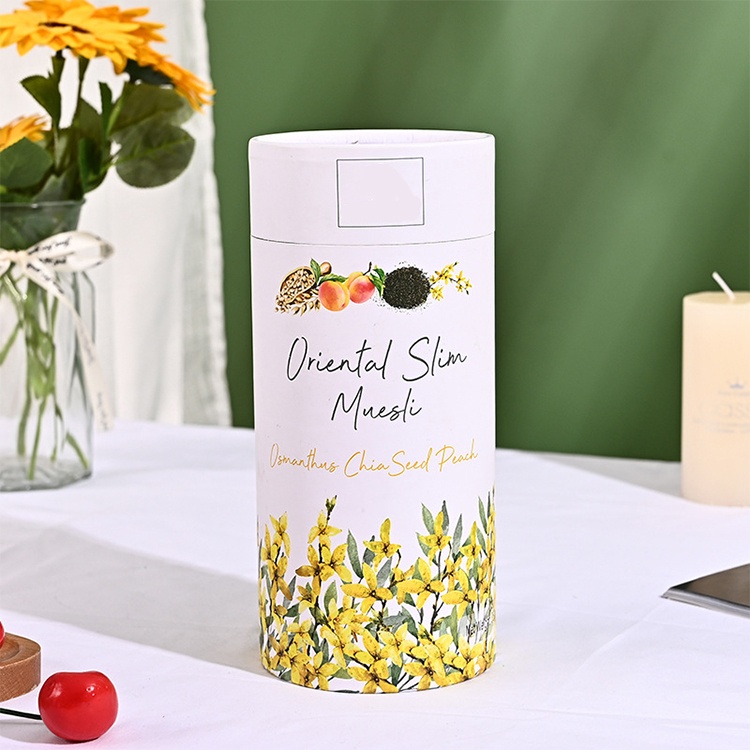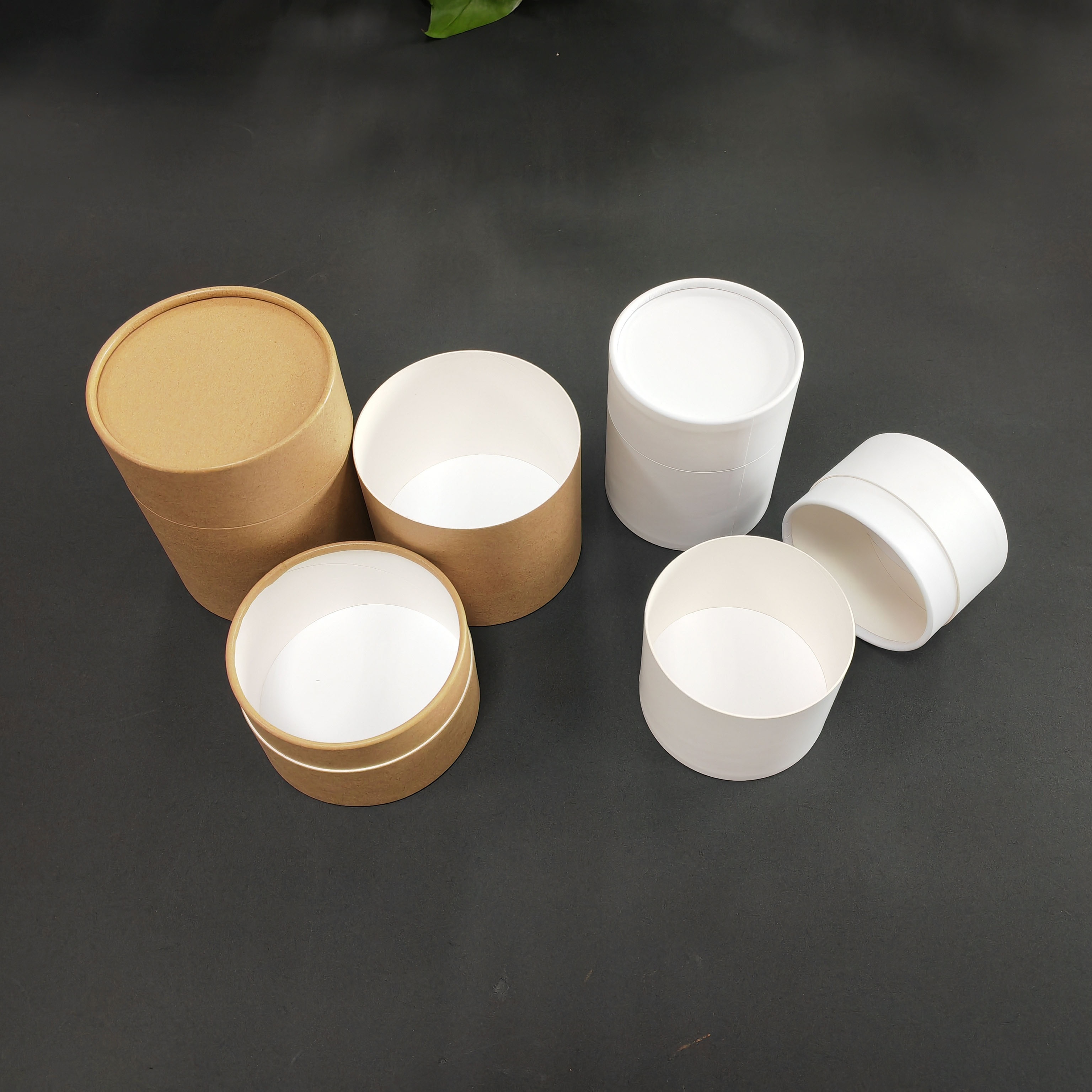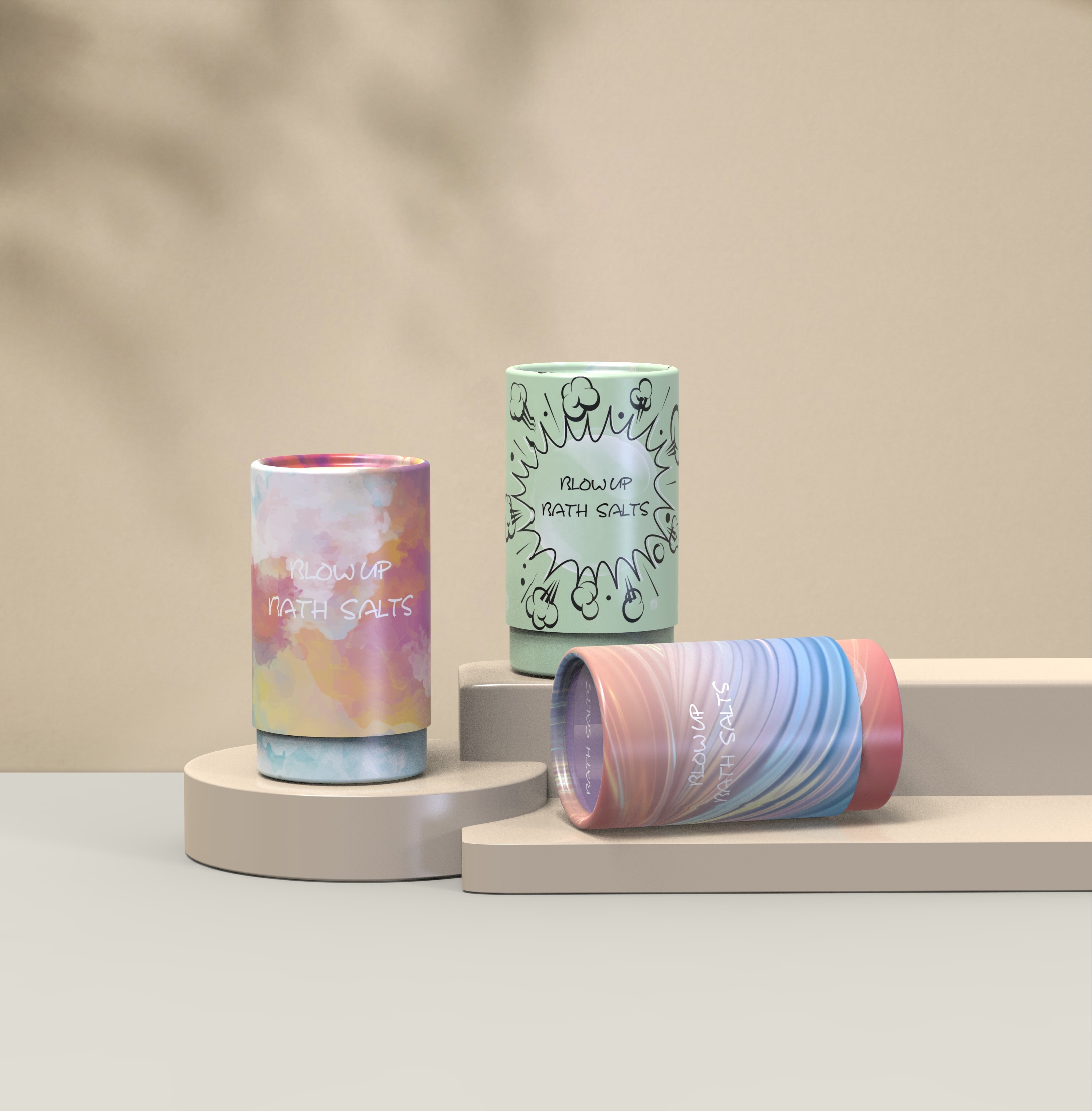Industry News
Creative Uses Of Cylinder Packaging Across Industries
Creative Uses Of Cylinder Packaging Across Industries
Summary
Cylinder packaging refers to a versatile form of packaging characterized by its cylindrical shape, utilized across various industries to enhance product storage, transport, and presentation. This innovative packaging solution includes tea canisters, poster tubes, and cosmetic tubs, each serving distinct functional and aesthetic purposes. The notable resurgence in the use of cylinder packaging is largely attributed to its ability to combine practicality with eye-catching designs, catering to evolving consumer preferences for both sustainability and unique branding.
In the tea industry, canisters have transitioned from historical ceramic containers to modern metal and cardboard designs, providing airtight storage that preserves freshness and flavor while adding visual appeal to kitchens and tea-drinking rituals. Poster tubes, primarily used for shipping artwork and large documents, have become essential in various sectors, including education and event planning, due to their durability and protective features. These tubes are often customizable, allowing businesses to enhance their branding while ensuring that their contents remain unharmed during transport.
The cosmetic industry has embraced cylinder packaging through tubs designed for creams and lotions, with a strong emphasis on aesthetic presentation and sustainability. Many brands are now opting for eco-friendly materials and innovative designs that resonate with environmentally conscious consumers. As a result, cylinder packaging has become a significant point of differentiation in a crowded market, enabling brands to reinforce their identities while meeting consumer demands for practical, attractive, and sustainable solutions.
Despite its advantages, the use of cylinder packaging faces challenges, including higher costs and environmental concerns associated with production and disposal. Nevertheless, its potential for brand differentiation and enhanced user experience continues to drive innovation and investment in this packaging format, making it a focal point for future trends in design, customization, and sustainability.
Tea Canisters
Tea canisters serve as an essential accessory for tea enthusiasts, providing both functional storage solutions and aesthetic appeal. Their design and material have evolved significantly over the centuries, reflecting cultural shifts and advancements in packaging technology.
Historical Overview
The origins of tea canisters can be traced back to ancient China during the Tang Dynasty (618-907 AD), when tea was stored in ceramic jars or porcelain containers as symbols of status and wealth. As tea became a treasured commodity, the need for effective storage solutions became apparent. During the Middle Ages, particularly with the advent of the Industrial Age, mass production techniques led to the popularization of metal tin canisters, which offered durability and airtight seals to preserve the freshness and flavor of tea leaves.
Modern Design and Usage
In contemporary times, tea canisters are available in various materials, including metal and cardboard, and come in numerous shapes and sizes. These canisters not only cater to the preservation of tea but also serve as versatile storage for other dry goods like coffee, herbs, and spices. Aesthetically, tea canisters can enhance kitchen decor, with designs that suit various interior styles, adding sophistication to tea-drinking rituals.
Benefits of Tea Canisters
The benefits of using tea canisters today are manifold. They help maintain the freshness of tea by protecting it from air, light, and moisture, thus preserving its aroma and flavor. Additionally, opting for reusable canisters contributes to sustainability by reducing the reliance on single-use packaging, which is prevalent in tea bags and other products. Tea canisters also make excellent gifts, as a beautifully designed container filled with premium tea reflects thoughtful consideration and taste.
Poster Tubes
Overview
Poster tubes are cylindrical packaging solutions primarily designed to store and transport large documents, artwork, and promotional materials. They are commonly constructed from sturdy materials like cardboard, plastic, or metal, ensuring durability and protection against damage during transit.
Applications
Poster tubes have a wide range of applications across various industries, owing to their robust construction and protective features.
Shipping
Poster tubes are frequently utilized to ship large documents such as blueprints, maps, and posters without the risk of damage. They safeguard contents from being crushed or bent during transportation, making them ideal for shipping sensitive materials.
Art and Photography
Artists and photographers often rely on poster tubes to store or transport their works. These tubes not only protect prints from folds and damage but can also be customized with an artist's branding, enhancing the artwork's cultural value.
Event Planning
Event planners utilize poster tubes to transport banners and promotional materials to various events. The ability to protect these materials from environmental factors is particularly advantageous during outdoor events.
Educational Institutions
Schools and universities frequently use poster tubes to transport students' projects and exhibition materials. Custom designs often feature the institution's emblem, fostering a sense of community and pride among students.
Customization and Branding
One of the notable aspects of poster tubes is their customizability. Buyers can request specific sizes, colors, and graphics for their tubes, making them effective marketing tools. Custom branding increases visibility and creates a memorable impression at events and trade shows.
Eco-Friendly Options
Many manufacturers are now offering eco-friendly poster tubes made from recycled or biodegradable materials, addressing environmental concerns associated with packaging waste.
Cost-Effectiveness
Poster tubes represent an affordable packaging solution for businesses, with low manufacturing costs and the potential for significant returns on investment. Enhanced customer satisfaction, reduced damage rates, and increased sales through effective branding contribute to long-term savings.
Cosmetic Tubs
Overview of Cosmetic Tub Packaging
Cosmetic tubs represent a popular choice in the beauty and personal care industry, serving as containers for a variety of products such as creams, lotions, and serums. These containers are typically made from materials that ensure product integrity while also providing an aesthetically pleasing presentation that aligns with brand identity. Brands often opt for dual tube packaging, which includes a cardboard cylinder surrounding a rigid inner holder, sometimes enhanced with a velvet insert for a luxurious feel.
Design and Branding Opportunities
The design of cosmetic tubs allows for significant flexibility, enabling brands to utilize modern printing technologies for high-resolution graphics and unique finishes that catch consumers' eyes at the point of sale. With options to customize colors, logos, and even shapes, cosmetic tubs can effectively convey a brand's narrative and values. The visual appeal of these packages is essential, as they often serve as the first point of contact with potential customers.
Sustainability Trends
As consumer preferences increasingly lean towards eco-friendliness, many cosmetic companies are exploring sustainable options in their tub packaging. Innovations include the use of biodegradable materials and tubes made entirely from recycled plastics or bio-based resins derived from renewable resources, such as sugarcane. This shift not only addresses growing environmental concerns but also enhances brand reputation among eco-conscious consumers.
Functionality and Practicality
Cosmetic tubs are designed to offer convenience and usability. Features such as child-resistant lids, moisture barriers, and various cap options contribute to their functional appeal. Additionally, the lightweight nature of these tubs aids in reducing shipping costs, making them a cost-effective choice for manufacturers and retailers alike.
Challenges and Opportunities
Cylinder packaging presents both challenges and opportunities for businesses across various industries. As brands increasingly seek to differentiate themselves in competitive markets, the design and functionality of packaging play a crucial role in attracting consumers and enhancing brand loyalty.
Challenges
Cost Considerations
One of the primary challenges associated with cylinder packaging is the cost. While custom cylinder designs can provide a unique and eye-catching presentation, they often come at a higher price point compared to traditional packaging options. This can be a significant barrier for small businesses or startups with limited budgets, making it essential to evaluate the return on investment before transitioning to cylinder packaging solutions.
Environmental Impact
Although cylinder packaging can be made from eco-friendly materials such as paper and cardboard, the manufacturing and disposal processes still pose environmental challenges. Brands must ensure that their cylinder packaging aligns with sustainability goals and complies with regulations regarding waste management and recycling. Additionally, educating consumers about proper disposal methods remains a key hurdle, as improper disposal can negate the environmental benefits of using eco-friendly packaging.
Opportunities
Brand Differentiation
Cylinder packaging offers a unique opportunity for brands to stand out in a saturated market. The distinctive shape and design of cylinder boxes can serve as a powerful marketing tool, reinforcing brand identity and creating a memorable visual impact on consumers. For example, iconic brands like Coca-Cola and Apple have successfully used unique shapes in their packaging to convey their brand ethos and enhance consumer recognition.
Enhanced User Experience
Ergonomic design elements in cylinder packaging can significantly improve user experience. The cylindrical shape allows for easy handling and stacking, making it a practical choice for consumers. Additionally, well-designed packaging enhances the unboxing experience, which can foster deeper emotional connections between the brand and its customers, ultimately leading to increased customer loyalty and repeat purchases.
Versatile Applications
Cylinder packaging is versatile and can be adapted to various products, from tea canisters to cosmetic tubs and poster tubes. This flexibility enables brands to explore creative packaging solutions that align with their product offerings while meeting
consumer expectations for aesthetics and functionality. As the demand for sustainable and unique packaging grows, businesses have the opportunity to innovate and capture market share by leveraging cylinder packaging effectively.
Future Trends in Cylinder Packaging
Sustainability and Eco-Friendly Materials
The trend toward sustainability is reshaping the cylinder packaging landscape, with increasing demand for eco-friendly materials such as recycled paper, biodegradable plastics, and compostable options. Consumers are becoming more environmentally conscious, often favoring brands that showcase social responsibility through their packaging choices. This shift highlights the importance of transparency in a brand's sustainability efforts, as companies that effectively communicate their use of eco-friendly materials tend to build greater consumer trust and loyalty.
Customization and Personalization
Customization is becoming a critical aspect of cylinder packaging, enabling brands to create unique presentations that resonate with consumers. This includes the use of vivid colors, patterns, and bespoke designs that tell a brand's story and reflect its identity. The ability to tailor cylinder packaging to align with consumer preferences not only enhances product visibility but also fosters an emotional connection with the product, particularly among younger consumers who appreciate engaging and interactive packaging designs.
Innovative Manufacturing Techniques
Advancements in manufacturing processes are playing a pivotal role in the evolution of cylinder packaging. Techniques such as tube winding and die-cutting are becoming more refined, allowing for greater precision and the production of high-quality, durable packaging solutions. As technology continues to advance, brands will benefit from improved efficiencies and the ability to create visually striking packaging that stands out in a competitive market.
Versatility and Multi-Functionality
The versatility of cylinder packaging is another trend expected to gain traction. As brands seek to optimize their packaging strategies, the integration of cylinder packaging with other formats, such as spout pouches or stand-up bags, is likely to emerge. This combination allows for a mix of traditional and modern aesthetics, catering to diverse consumer preferences and enhancing functionality. Such innovative setups can create a more dynamic unboxing experience, which is increasingly valued by consumers.
Enhanced Consumer Experience
The future of cylinder packaging will increasingly focus on enhancing the consumer experience. Brands are exploring creative ways to make packaging more interactive, such as incorporating elements that invite consumer engagement or gamification. This not only elevates the product's appeal but also transforms the act of purchasing into an enjoyable experience, making the product more memorable for consumers.
References
- Tea Packaging Ideas, Tips, & Examples - Sttark
- The Evolution of Packaging. Chapter 03 How innovations shaped...
- The Timeless Elegance of Tea Canisters: A Historic Journey and the
- Custom Poster Tubes - Eco Friendly Mailing Solutions - Alibaba.com
- Manufacturers & Suppliers of Poster Tubes
- mailing tubes | - Blog
- Comprehensive Insights into Cylinder Tube Packaging for Product ...
- Exploring the timeless appeal of tube packaging
- How to Use Packing Tubes for Your Business? - Safe Packaging
- Custom Paper Tubes - Premier Paper Tube Packaging
- Enhancing Shelf Appeal with Custom Cylinders - Star Stuff Group
- Sustainable Tubes - Neopac The Tube
- Case Study: Brands Leading the Way in Sustainable ...
- 9 Packaging Strategies To Step Up Your Brand & Marketing
- 7 Tips for Effectively Promoting Your Eco-Friendly Packaging
- Case Study: Brands Leading the Way in Sustainable Packaging
- The Importance of Product Packaging Shape
- How Brands Persuade Your Buying Preferences with Packaging
- The Perfect Balance of Style and Function in Packaging Solutions
- How Eco-Friendly Packaging Boosts Consumer Choice & Brand
- 5 trends in tea packaging design - Creative agency Moloko
- Innovative Designs: Why Cardboard Cylinder Packaging is on the Rise
- 6 Packaging Design Features that Appeal to Young People
- How Does Design Elements Applied in Custom Paper ...
- Bag In Tube Packaging Market 2026: Size, Market Trends ...
Categories
Latest News
Contact Us
Contact: Aaron Lee
Phone: +8613570866244
Tel: +8675529490260
Add: Li Songlang 2nd Industrial Zone,No.18,FengTang Rd,Guangming New District


